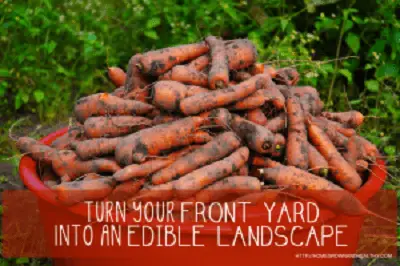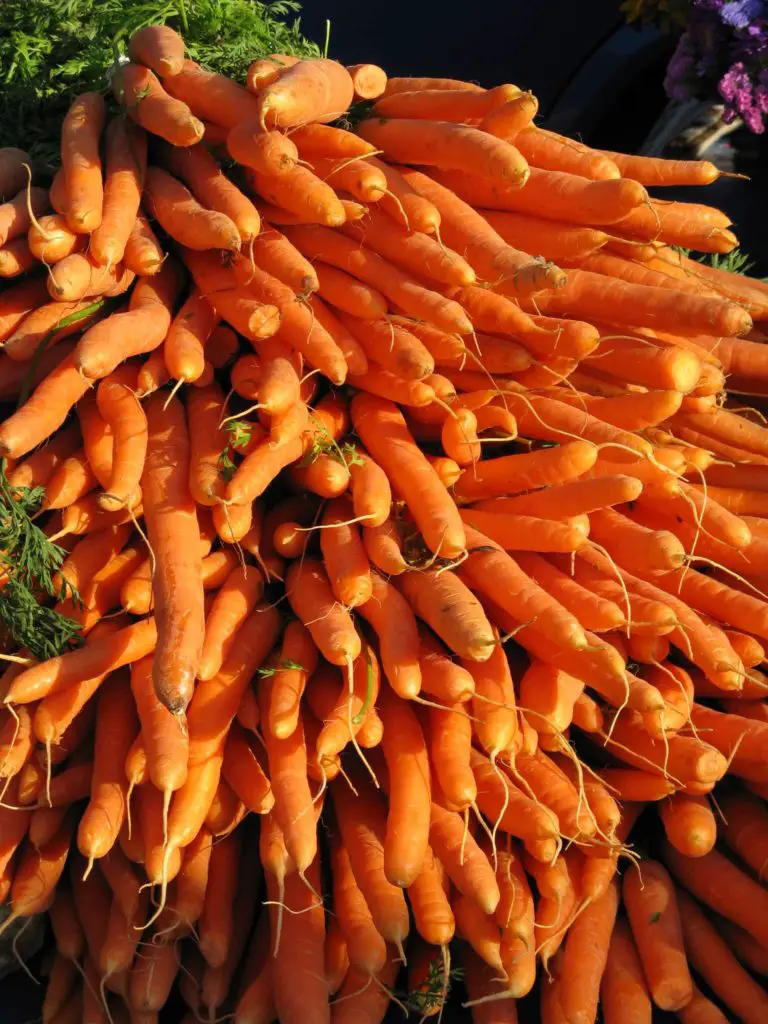
There are many ways to transform your life and live a more sustainable, healthy, and intentional existence. My family is working on it everyday. One change we’ve made while we work on this goal is the transformation of our front yard into an edible landscape.
Consider this quote:
The lawns in the United States consume around 270 billion gallons of water per week—enough to water eighty-one million acres of organic vegetables all summer long. An average size lawn of around a third of an acre could, while maintaining a small area for recreation, produce enough vegetables to feed a family of six.1
Yes, people love grass but there may be a better way. It involves transforming our front yards into something that improves the environment and builds community.
On our little homestead, we have decided to create a “mini-farm” in our front yard. We grow many varieties of vegetables and several different types of flowers. A number of things made this easy for us – we don’t have an HOA, the landscaping was bare to begin with and we already owned the equipment that we needed to prep the area. However, it is my contention that with even a small raised bed out front or a few pots on the porch, everyone can begin growing their own food in their front yard.


One reason to do this is to move people out of their backyards and into their front. One of the best ways to build community is by hanging out in front of your house. If there are plants to tend to, people are more likely to leave behind the confines of their backyard and move out front. Getting to know your neighbors can reduce crime and build lasting friendships.
In recent times, the drive to buy local and organic has picked up speed. To that end, one cannot get more local than their own front yard.
Consider this quote:
Homeowners use up to ten times more chemical pesticides per acre on their lawns than farmers use on crops.2
For all of the organic food purchasing that is done, people may be completely negating their efforts by pouring pesticides and chemical additives (including things sold at home improvements stores like Weed n’ Feed and Miracle Grow) on their front lawns. Certainly something to consider.
Finally, I find that growing vegetables in our front yard has been an incredibly educational experience. Every time I start a garden I learn something new. As my children garden with me, they learn things. And as neighbors walk by and view our mini-farm, they learn new things.
Again, there are many levels of front yard farming. Not everyone needs to go out tomorrow morning and start ripping out their grass. However, it might be fun to try replacing some petunias in your front flower bed with tomato plants or sticking a few pots of lettuce on the stoop. I bet people will notice and I bet you’ll be more likely to go out front if the prize of a ripe tomato is waiting for you.
Give it a try!
Sources
- Heather C. Flores, Food Not Lawns: How to Turn Your Yard into a Garden and Your Neighborhood into a Community, Chelsea Green, 2006
- “News Release: What’s Happening to the Frogs,” U.S. Fish and Wildlife Service website, July 6, 2000
